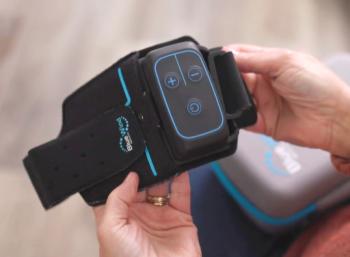
Physicians ready practices for 2018 MACRA rule
Medical groups, experts weigh in on Medicare payments for 2020.
With the new year less than two months away,
FURTHER READING:
But according to Tony Panjamapirom, senior consultant with the Advisory Board, this exemption may not last forever. “Providers still need to be careful, even if exempt,” says Panjamapirom. “They still should pay attention to MIPS policy, and better yet, participate voluntarily so you can start tracking their performance. In one way or another, I’m pretty sure small practices will come back into the scene in future years. Do not sit back and relax.”
Other highlights of the 2018 final rule include:
· Allowing physicians impacted by extreme and uncontrollable circumstances, such as the recent hurricanes, to get relief from reporting requirements.
· An option for physicians in small practices to combine into virtual groups for reporting purposes.
· Cost is now 10% of the final MIPS score, up from the proposed 0%.
· Quality and cost categories will require full-year reporting.
· 2014 Certified Electronic Health Record (EHR) technology is allowed, but those with 2015 Certified EHRs get bonus points.
· Caring for complex patients nets five bonus points.
· Small practices-those with 15 physicians or fewer-receive five bonus points in MIPS.
IN CASE YOU MISSED IT:
Reaction to these changes in the final rule has been mixed. Most see some positive improvement, but agree there is more work that needs to be done. For example, the American College of Physicians (ACP) applauded the relief for doctors impacted by hurricanes and other disasters, and also the increase in bonus points within MIPS for treating medically complex patients and the
“We will be looking at the QPP rule closely to identify positive improvements that CMS has already made and to make more detailed suggestions about changes that CMS can make to ease some of the regulatory burdens on physicians,” Susan Thompson Hingle, MD, MACP, and chair of the board for the ACP board of regents, said in a statement.
Areas of concern for the ACP include the complexity of scoring in MIPS, that quality reporting data now requires data from 60% of patients instead of the proposed 50% and that cost will now be 10% instead of 0% as proposed earlier this year.
The American Association of Family Physicians (AAFP) liked the additional flexibility some of the rules provided for small group practices caring for complex patients, but not the requirement for full-year data reporting in 2018 for cost and quality.
TRENDING ON OUR SITE:
“The current lack of prompt and actionable feedback from CMS hampers practices’ ability to correct inadvertent reporting mistakes,” Michael Munger, MD, AAFP president, said in a statement. “The full-year reporting period impedes practices’ ability to learn how to properly report, perform mid-year upgrades, make corrections in their reporting capacities and become more familiar with MIPS requirements.”
This concern was also shared by the Medical Group Management Association. “CMS is in effect prioritizing quantity over quality and giving physicians less than 60 days to prepare for the 2018 MIPS requirements,” Anders Gilberg, senior vice president, MGMA government affairs, said in a news release.
The American Osteopathic Association supports the additional transition year, and says CMS “has advanced opportunities for solo and small practitioners to effectively engage in MACRA,” according to Mark A. Baker, DO, president of the group. “The introduction of virtual group options allows small practices to meet MACRA requirements in new ways that are important steps forward for solo and small providers, who are stretched to meet MACRA’s resource-intensive reporting requirements. We commend CMS for allowing small practices to pool resources to meet reporting standards.”
Reaction from doctors shows how much frustration is still associated with the program.
“I think they should ditch the whole thing until they can prove they are actually improving anyone’s care, and they have made it as simple and less-burdensome as possible,” says Vikki Stefans, MD, of Arkansas Children’s Hospital. She suggests a pilot project should be done to prove the concept before its required of all physicians. “I thought there was some interest in combating physician burnout-if so, why are we all facing even more detailed and extensive paperwork and calculations that only detract from what our patients need and want?”
Melissa Lucarelli, MD, a solo practitioner in rural Randolph, Wisconsin, likes the additional flexibility for smaller practices, but wonders if further changes are coming.
“I am most apprehensive about the fact that the final rule doesn’t seem to be finalized yet,” says Lucarelli, a member of the Medical Economics Editorial Advisory Board. “Although groups will be expected to attest to 12 months of quality data beginning in January 2018, CMS admits that it is still ‘soliciting feedback on some of these measures,’ possibly through fall of 2018.”
RELATED READING:
Panjamapirom says the 2018 rule is final, but that CMS still wants feedback from providers to gauge satisfaction with the most recent changes and to gather suggestions for future modifications.
He says that CMS is doing what it can to reduce the regulatory burden within the framework of the law, but changes that some are unhappy with this year-such as the inclusion of cost in the MIPS formula-are to lessen the transition in 2019.
“CMS thought it would be too dramatic of a change from 2018 to 2019 if they didn’t include cost now,” says Panjamapirom. “It’s a statutory requirement that cost be 30% in 2019. If you go from zero to 30% in one year, they were afraid that would be too big of a jump, so they moved cost to 10% in 2018.”
Newsletter
Stay informed and empowered with Medical Economics enewsletter, delivering expert insights, financial strategies, practice management tips and technology trends — tailored for today’s physicians.














